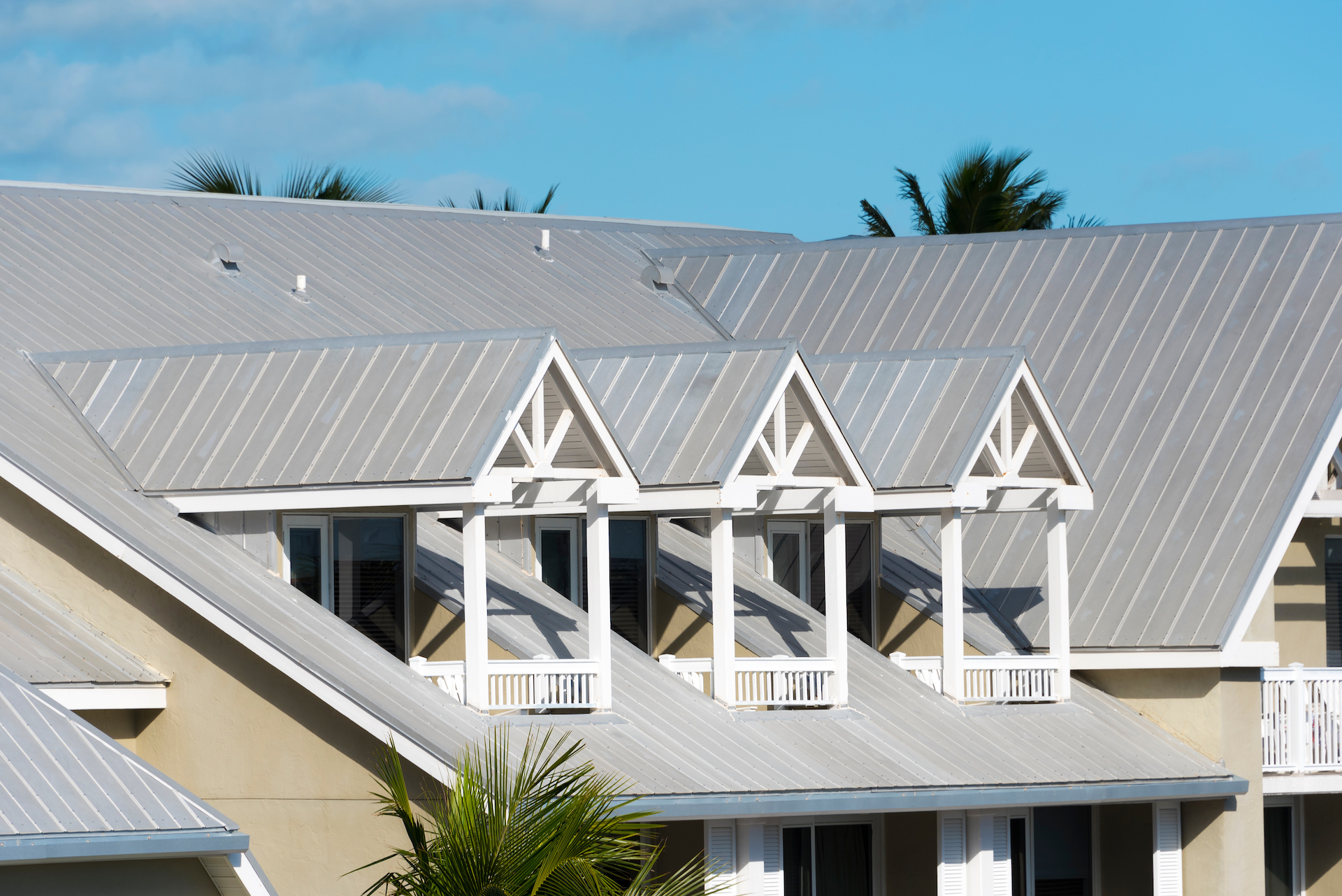Purchasing a new roof for your home can be an overwhelming process. In this blog post we'll attempt to help you make sense of an energy efficient roofing and the verbiage you hear around the industry so that you can make sense of it all. On this page:
Look For Roofing Materials With A High Solar Reflective Index (SRI)
It’s important that we start with some context – the energy efficiency of a roof is based on it’s Solar Reflective Index score. We’ll mention the SRI at other points in this blog post.
The Solar Reflectance Index (SRI) is the primary factor in determining the energy efficiency of a roof because it measures two key factors that affect a roof's ability to reflect solar heat and release absorbed heat:
Solar Reflectance: This refers to the ability of the roof to reflect the sun's rays and prevent them from being absorbed into the building. The higher the solar reflectance, the less heat is absorbed by the roof, and therefore, less heat is transferred to the building.
Thermal Emissivity: This refers to the ability of the roof to release absorbed heat back into the atmosphere. A roof with high thermal emissivity can release absorbed heat quickly, preventing it from being transferred to the building.
This does mean that white is the best color for a roof, however as we know that isn’t very practical.

Metal Roofing is Your Best Choice For Energy Efficiency
The SRI of metal roofing is routinely above 40 for practical colors that strike a good balance of energy efficiency and style, but can go much higher in energy efficient colors such as the Solar White by Sheffield metals that has a SRI of 82. Of course this does come at a cost; Metal roofing will typically be 2-3x more expensive than asphalt shingles.
About Tile Roofing
SRI values of clay tile roofing can range from around 15 to 40 or higher, with higher values indicating greater reflectivity and therefore better energy efficiency. Dark tiles naturally will be lower in the rating than light tiles.
About Asphalt Shingles.
Base level shingles will typical have an SRI of 10-15, with some on the higher end getting into the low 20s such as those included in the Malarkey lineup of solar shingles.
Recommended Shingle Lines.
These Shingle lines have been noted for their high SRI along with a high Solar Reflectance rating at 3 years of age indicating they are energy efficient & resilient. Along with that, these shingles are all available in practical colors (non-white).
- Windsor Ecoasis Scotchgard, Malarkey Roofing Products
- Timberline Cool Series, GAF
- Presidential Solaris, CertainTeed LLC
Details on other shingle lines non-energy optimized can be found on our best asphalt shingles for residential roofing page.

Light shingles with a reflective coating can offer the best economics of cost and energy efficiency.
Reflective Coating Should Be Used on shingles
Reflective coatings can be applied to shingles to improve their energy efficiency by increasing their solar reflectance. These coatings are usually made of materials such as acrylic or elastomeric polymers that are formulated to reflect a higher percentage of solar radiation. The reflective coatings can be applied to the shingles during the manufacturing process or as a post-installation treatment.
When selecting a reflective coating for shingles, it is important to choose a product that is designed for use on the specific type of shingles you have installed. The reflective coating should also meet or exceed industry standards for solar reflectance, such as the Cool Roof Rating Council (CRRC) rating system. By choosing a high-quality reflective coating and having it professionally installed, homeowners can maximize the energy efficiency of their shingle roof and potentially save money on their energy bills over time.
Energy Efficient Roofing Is Eligible For A Tax Credit
The residential tax credit is a credit that homeowners can claim when they make energy-efficient upgrades to their homes, reducing their energy consumption. However, this tax credit only applies to Energy Star certified asphalt and metal roofs.
This tax credit only applies to Energy Star and is 10% of the materials minus the installation costs. The energy efficiency tax credit regularly changes, so it's best to look up the latest legislation on energy efficient tax credits.
Energy Efficient Roofs Can Save You Money
They can lower your utility bills by as much as 25 percent. For an average home, the savings can add up to $300 to $500 a year.
Some states and municipalities offer rebates for cool roofs. You can even earn a tax credit through the Energy Star rating program.
Not only that, but you also have to keep in mind, that by reducing the heat in your home, your HVAC system won't have to work nearly as hard, hence its useful life will be increased.
Energy Efficient Roofs Are likely To Last Longer
This is something most people don't realize, but because energy efficient roofing material reflect, as opposed to absorb, ultraviolet rays which would degrade the material, the life expectance of higher SRI roofing materials is longer.
The Benefits Of An Energy Efficient Roof Are Deeper Than Just Your Energy Costs
Beyond reducing your energy bills, an energy-efficient roof offers various benefits, such as minimizing maintenance expenses, increasing your property's or resale value, prolonging your roof's and HVAC system's lifespan, enhancing your home's comfort, and improving indoor air quality for unconditioned areas like garages and covered patios. Additionally, an energy-efficient roof can be aesthetically pleasing and reduce peak electricity demand, which can prevent power outages. Furthermore, it can also have a positive impact on the environment by decreasing the energy required to cool buildings, thus minimizing power plant emissions.

